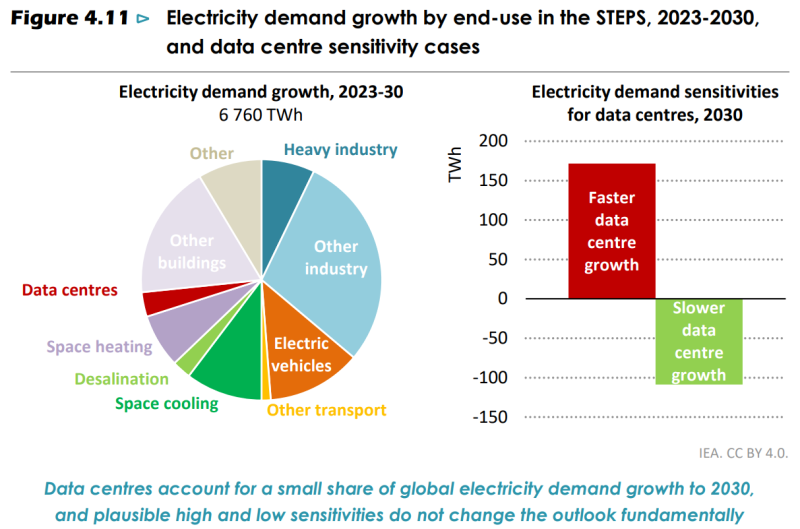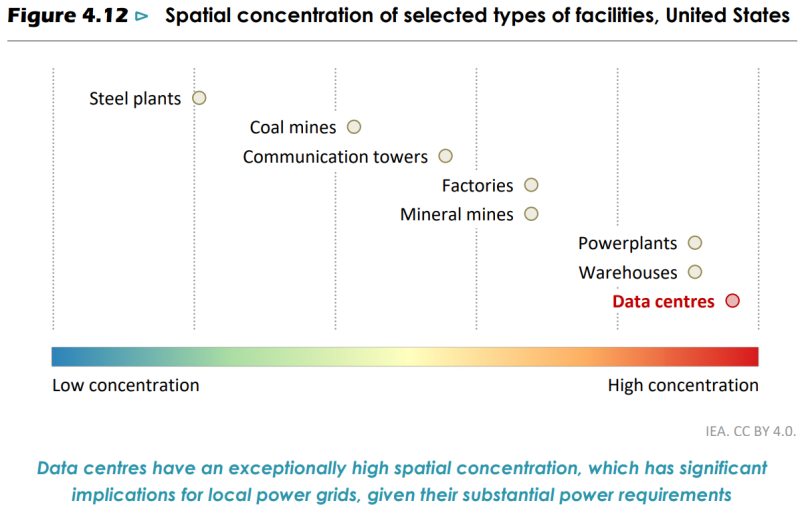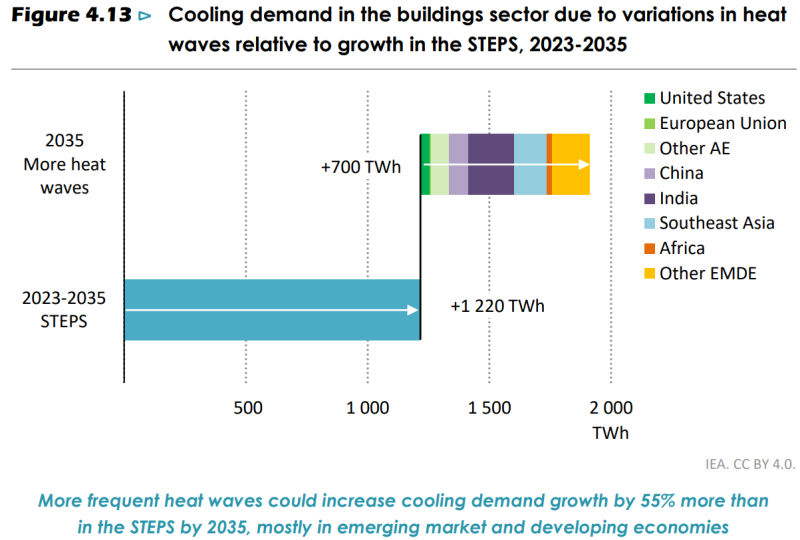As the International Energy Agency (IEA) stated in its annual World Energy Outlook report, global demand for electricity is growing rapidly. According to the agency, in the next 10 years the annual increase will be comparable to the energy consumption of the whole of Japan. This will impact emissions reduction targets and demand in 2035 will be 6% higher than previously forecast.
On the data center side, consumption will skyrocket due to the growth of the AI market and digitalization in general, but this sector will still account for only a small portion of global energy costs. However, for now the forecasts are very approximate, taking into account the unpredictability of problems in supply chains, increases in energy efficiency, political factors, etc.
For a long time, growth in energy consumption was constrained by the migration of workloads from legacy enterprise sites to much more efficient clouds. However, this trump card has already been used, and the growth of AI loads will lead to a rise in energy consumption to an unprecedented level. Thus, according to IEA estimates, the energy consumption of data centers in 2022 amounted to 230–340 TWh, i.e. about 1%–1.3% of the global total, excluding costs for data transmission networks and mining.

Image source: IEA
However, in any case, the data center will not account for the bulk of consumption. For example, the base case assumes that data centers will account for less than 10%% of total demand growth. The water desalination industry will show approximately the same growth, and demand for electric vehicles will be at least three times higher. The agency cited data center operators’ aggressive investments in renewable energy. In other words, sustainable development of the sector is entirely feasible.

However, limited generation capacity and grid constraints may have a more serious impact on the ground as suitable data center sites become increasingly scarce. As a rule, data centers are concentrated in one region. As a result, there is not enough energy in Virginia (USA) or Ireland, and even temporary moratoriums have been introduced in Singapore and Amsterdam. It will be more difficult further, since data centers with a capacity of 1 GW or more will soon become quite common.

In the case of the United States, according to IEA estimates, the situation with the placement of data centers is worse than with factories, power plants and warehouses. In order to correctly assess the prospects for growth in demand for data centers, politicians, businesses and other structures should cooperate more closely. In particular, the IEA notes the increasing incidence of heat waves, which negatively affect the energy consumption of cooling systems and the energy efficiency of facilities in general. In total, according to IEA estimates, there are about 11 thousand data centers in the world.